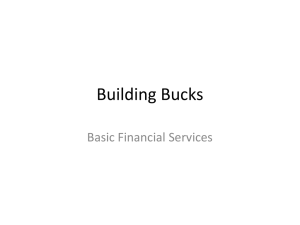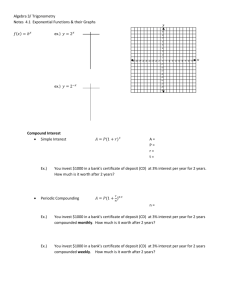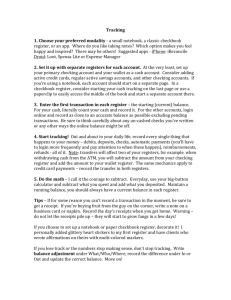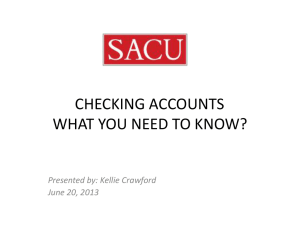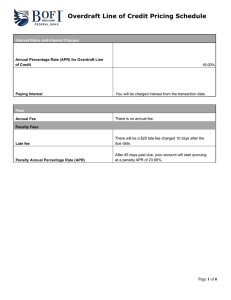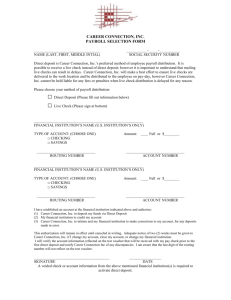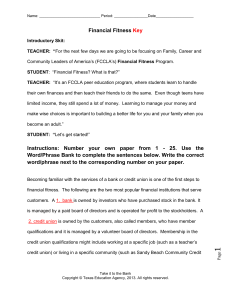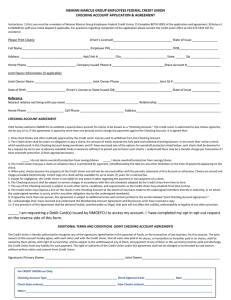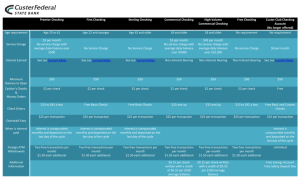Personal Finance Problems & Solutions: ATM, Savings, Loans
advertisement
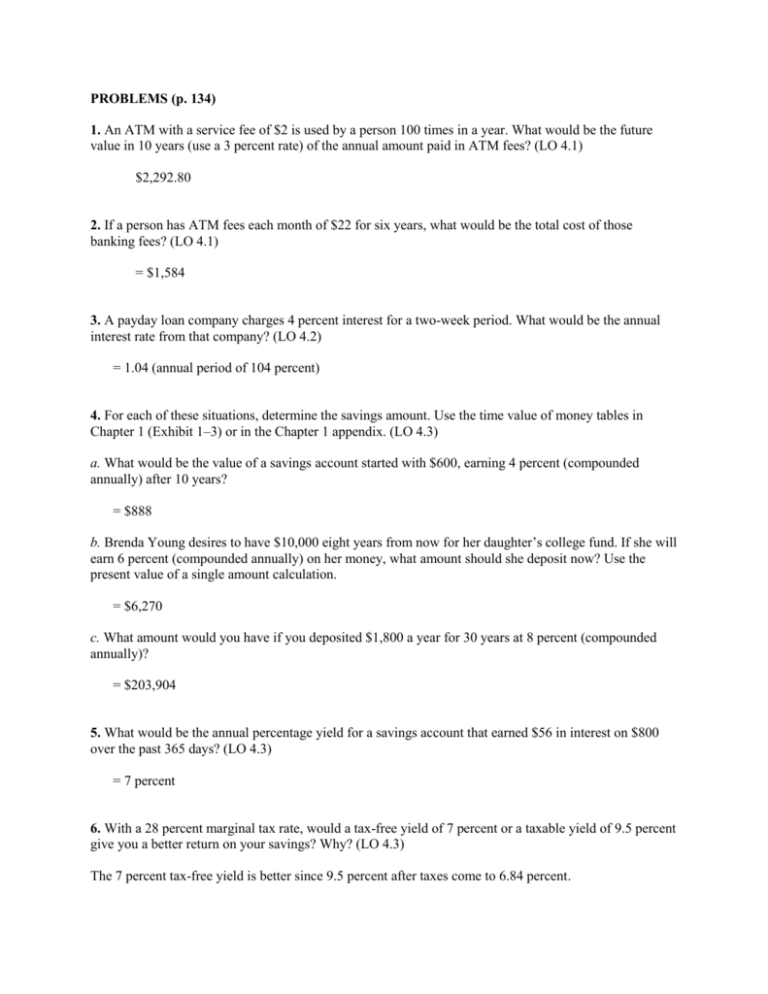
PROBLEMS (p. 134) 1. An ATM with a service fee of $2 is used by a person 100 times in a year. What would be the future value in 10 years (use a 3 percent rate) of the annual amount paid in ATM fees? (LO 4.1) $2,292.80 2. If a person has ATM fees each month of $22 for six years, what would be the total cost of those banking fees? (LO 4.1) = $1,584 3. A payday loan company charges 4 percent interest for a two-week period. What would be the annual interest rate from that company? (LO 4.2) = 1.04 (annual period of 104 percent) 4. For each of these situations, determine the savings amount. Use the time value of money tables in Chapter 1 (Exhibit 1–3) or in the Chapter 1 appendix. (LO 4.3) a. What would be the value of a savings account started with $600, earning 4 percent (compounded annually) after 10 years? = $888 b. Brenda Young desires to have $10,000 eight years from now for her daughter’s college fund. If she will earn 6 percent (compounded annually) on her money, what amount should she deposit now? Use the present value of a single amount calculation. = $6,270 c. What amount would you have if you deposited $1,800 a year for 30 years at 8 percent (compounded annually)? = $203,904 5. What would be the annual percentage yield for a savings account that earned $56 in interest on $800 over the past 365 days? (LO 4.3) = 7 percent 6. With a 28 percent marginal tax rate, would a tax-free yield of 7 percent or a taxable yield of 9.5 percent give you a better return on your savings? Why? (LO 4.3) The 7 percent tax-free yield is better since 9.5 percent after taxes come to 6.84 percent. 7. Janie has a joint account with her mother with a balance of $562,000. Based on $250,000 of Federal Deposit Insurance Corporation coverage, what amount of Janie’s savings would not be covered by deposit insurance? (LO 4.3) = $31,000 uninsured 8. A certificate of deposit often charges a penalty for withdrawing funds before the maturity date. If the penalty involves two months of interest, what would be the amount for early withdrawal on a $20,000, 5 percent CD? (LO 4.3) = $166.67 9. What might be a savings goal for a person who buys a five-year CD paying 4.67 percent instead of an 18-month savings certificate paying 3.29 percent? (LO 4.4) A person saving for a longer-term goal such as children’s education, retirement, or purchase of a vacation home may make use of a five-year savings certificate. A person who will need the funds in less than two years would use an 18-month savings certificate. Also, if you believe interest rates will be dropping, use of a long-term certificate will guarantee a higher savings rate over this time period. 10. What is the annual opportunity cost of a checking account that requires a $300 minimum balance to avoid service charges? Assume an interest rate of 3 percent. (LO 4.4) = $9.00 11. Compare the costs and benefits of these two checking accounts: (LO 4.4) Account 1: A regular checking account with a monthly fee of $6 when the balance goes below $300. Account 2: An interest-earning checking account (paying 1.2 percent), with a monthly charge of $3 if the balance goes below $100. Account 1 allows “free” checking unless the balance goes below the minimum, then the fees can get quite expensive. With Account 2, customers will receive a low return (benefit) but should be careful not to leave too much in the account since higher rates may be available with other types of savings plans. 12. A bank that provides overdraft protection charges 12 percent for each $100 (or portion of $100) borrowed when an overdraft occurs. (LO 4.4) a. What amount of interest would the customer pay for a $188 overdraft? (Assume the interest is for the full amount borrowed for whole year.) $24 (the service lends in $100 increments) b. How much would be saved by using the overdraft protection loan if a customer has three overdraft charges of $30 each during the year? $66 13. What would be the net annual cost of the following checking accounts? (LO 4.4) a. Monthly fee, $3.75; processing fee, 25 cents per check; checks written, an average of 14 a month. = $87 cost b. Interest earnings of 4 percent with a $500 minimum balance; average monthly balance, $600; monthly service charge of $15 for falling below the minimum balance, which occurs three times a year (no interest earned in these months). = $27 net cost 14. Based on the following information, prepare a bank reconciliation (see page 131) to determine adjusted (corrected) balance: (LO 4.4) Bank balance Checkbook balance Outstanding checks Direct deposits $680 642 112 70 Bank balance: = $628 Checkbook balance: =$628 Account fees ATM withdrawals Deposit in transit Interest earned $12 80 60 8
